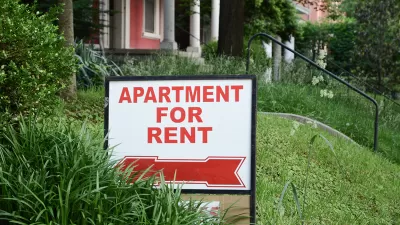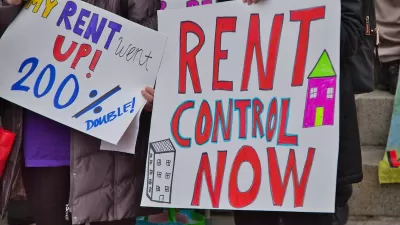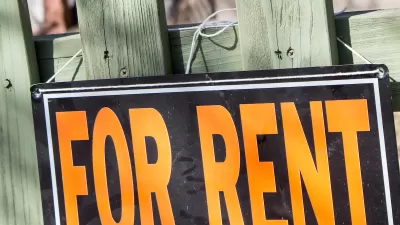The public perception of rent control has been dominated by apartment owner-funded studies and messaging for decades, fostering misconceptions about it's impact, according to poverty law attorney Parisa Ijadi-Maghsoodi.

Rent control has been losing the public perception battle. This circumstance comes as no surprise given that corporate money and profits align with property owners and real estate investors. San Diego poverty law attorney Parisa Ijadi-Maghsoodi provides a concise rebuttal to some of the most common public perceptions about rent control—what she calls the "myths" of rent control:
Myth 1: Rent control is illegal.
Fact: Rent control is legal and an effective tool to address housing affordability.
Myth 2: Rent control decreases the housing stock by disincentivizing new housing construction.
Fact: Rent control has no impact on new construction because it does not apply to new construction.
Myth 3: Rent control causes the rental stock to decrease because rent control units will be converted to condominiums.
Fact: Ordinances restricting condominium conversions protect the stock of rental units under rent control.
Myth 4: Rent control hurts tenants.
Fact: Rent control helps tenants. Rent control studies are funded by real estate developments, investors, and corporate apartment owner associations, and their own data supports the effectiveness of rent control.
Myth 5: Rent control is not needed, building market rate units will solve the housing crisis.
Fact: Building market rate units without effective tenant protection ordinances exacerbates the housing crisis.
Myth 6: Rent control incentivizes tenants to remain tenants, rather than become homeowners invested in their communities.
Fact: Society has traditionally favored homeowners over tenants primarily because homeowners intend to reside in and better their community, and rent control furthers these goals.
To match these "myths," in her article, Ijadi-Maghsoodi provides 7 recommendations for additional measures to stabilize rental housing and protect families. For Ijadi-Maghsoodi's reasoning and authority for her conclusions, please read the source article.
FULL STORY: Demystifying Rent Control

Planetizen Federal Action Tracker
A weekly monitor of how Trump’s orders and actions are impacting planners and planning in America.

San Francisco's School District Spent $105M To Build Affordable Housing for Teachers — And That's Just the Beginning
SFUSD joins a growing list of school districts using their land holdings to address housing affordability challenges faced by their own employees.

The Tiny, Adorable $7,000 Car Turning Japan Onto EVs
The single seat Mibot charges from a regular plug as quickly as an iPad, and is about half the price of an average EV.

Seattle's Plan for Adopting Driverless Cars
Equity, safety, accessibility and affordability are front of mind as the city prepares for robotaxis and other autonomous vehicles.

As Trump Phases Out FEMA, Is It Time to Flee the Floodplains?
With less federal funding available for disaster relief efforts, the need to relocate at-risk communities is more urgent than ever.

With Protected Lanes, 460% More People Commute by Bike
For those needing more ammo, more data proving what we already knew is here.
Urban Design for Planners 1: Software Tools
This six-course series explores essential urban design concepts using open source software and equips planners with the tools they need to participate fully in the urban design process.
Planning for Universal Design
Learn the tools for implementing Universal Design in planning regulations.
Smith Gee Studio
City of Charlotte
City of Camden Redevelopment Agency
City of Astoria
Transportation Research & Education Center (TREC) at Portland State University
US High Speed Rail Association
City of Camden Redevelopment Agency
Municipality of Princeton (NJ)





























